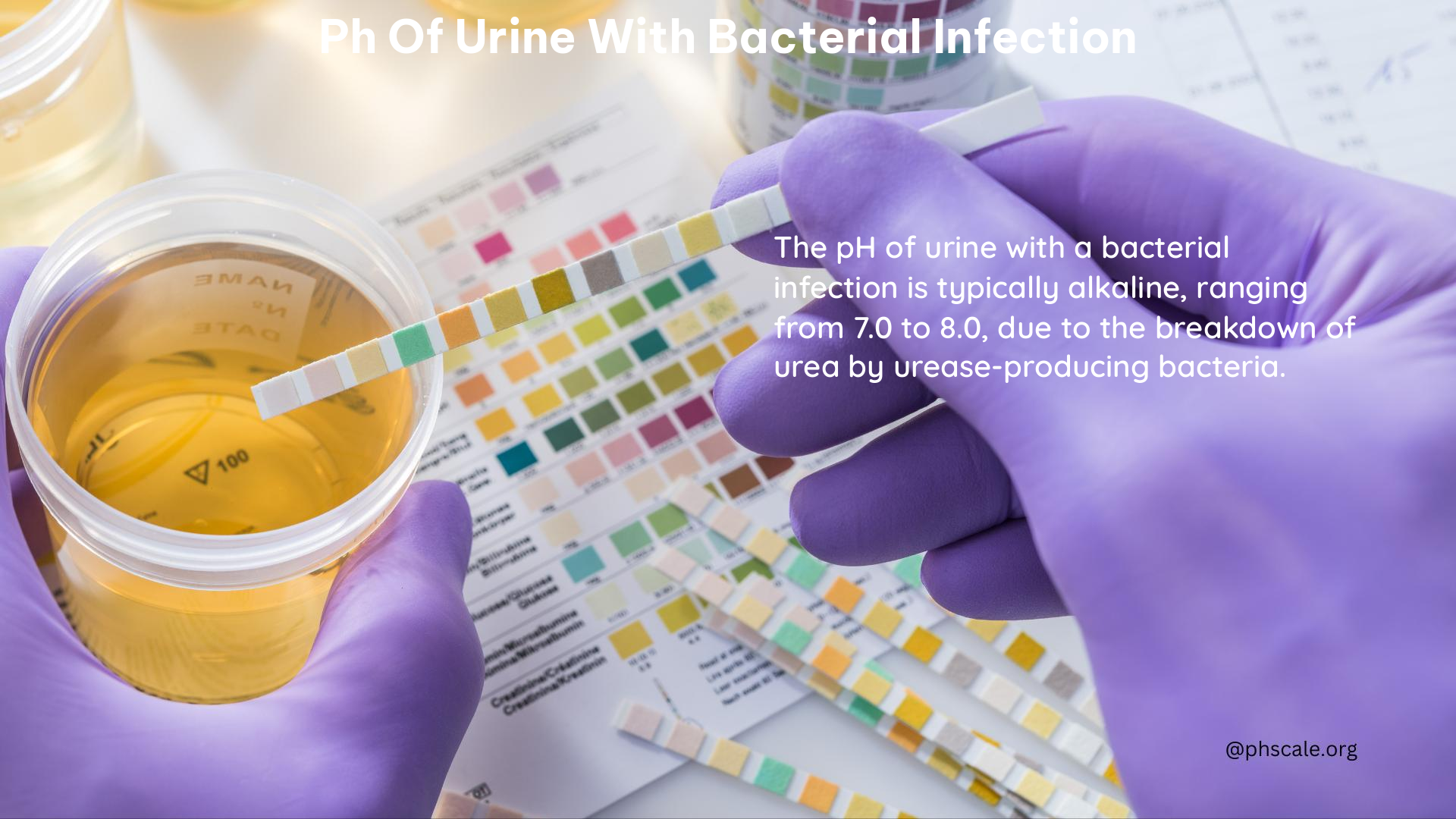The pH of urine plays a crucial role in the context of bacterial infections, particularly urinary tract infections (UTIs). Understanding the relationship between urine pH and bacterial growth can help in the prevention and management of these common infections.
Normal Range of Urine pH in Bacterial Infections
The normal range of urine pH can vary, but it is generally considered to be between 4.5 and 8.0. However, in the presence of bacterial infections, the pH of urine can shift significantly.
- Alkaline Urine: A urinary pH greater than or equal to 7 is considered alkaline. This pH range is often associated with UTIs caused by urease-producing organisms such as Proteus spp., Providencia spp., and Morganella spp. These bacteria can split urea, increasing the pH of urine.
- Acidic Urine: A urinary pH less than 7 is considered acidic. While many UTIs occur in acidic urine, some bacteria like Escherichia coli and Klebsiella pneumoniae thrive in acidic environments.
Impact of Urine pH on Bacterial Growth

The pH of urine can have a significant impact on the growth and proliferation of bacteria in the urinary tract.
- Alkaline Environment: Urease-producing bacteria like Proteus spp. and Pseudomonas aeruginosa tend to grow better in alkaline urine, which can lead to more severe infections.
- Acidic Environment: Bacteria like E. coli and K. pneumoniae grow better in acidic urine, making acidic pH a potential risk factor for UTIs.
Factors Influencing Urine pH
Several factors can influence the pH of urine, which in turn can affect the growth of bacteria.
- Diet: The acidity of urine can be influenced by diet. For example, a diet rich in fruits and vegetables can lead to more alkaline urine, while a diet high in meat and dairy products can result in more acidic urine.
- Gut Microbes: The gut microbiome can also affect urine pH. Certain gut bacteria can produce metabolites that influence the pH of urine, which in turn affects bacterial growth.
Contaminants and Chemicals in Urine with Bacterial Infections
In addition to pH, other factors in the urine can also impact bacterial growth and infection.
- Urease: Urease-producing bacteria can split urea, increasing the pH of urine and creating an environment conducive to bacterial growth.
- Metabolites: Certain metabolites produced by gut microbes can influence urine pH and affect bacterial growth.
- Iron: Bacteria need iron to grow. The presence of iron-binding compounds in urine can limit bacterial growth by depriving them of this essential nutrient.
Balancing Urine pH and Home Remedies
Maintaining a healthy urine pH can be an important step in preventing and managing bacterial infections.
- Dietary Changes: Eating a balanced diet rich in fruits and vegetables can help maintain a healthy urine pH. Avoiding foods that can alkalinize the urine, such as those high in calcium, can also be beneficial.
- Hydration: Drinking plenty of water can help dilute the urine and maintain a healthy pH.
- Cranberry Juice: Cranberry juice has been suggested as a potential home remedy for UTIs due to its ability to acidify urine and inhibit bacterial adhesion.
History and Research
The relationship between urine pH and bacterial infections has been the subject of extensive research and study.
- Urease-Producing Bacteria: The role of urease-producing bacteria in UTIs has been extensively studied. These bacteria can create an alkaline environment that fosters bacterial growth.
- Dietary Influence: Research has shown that diet can influence urine pH and susceptibility to UTIs. A diet rich in fruits and vegetables can help maintain a healthy urine pH.
In conclusion, the pH of urine plays a crucial role in the context of bacterial infections, particularly urinary tract infections. Understanding the normal range of urine pH, the impact of pH on bacterial growth, and the factors that influence urine pH can help in the prevention and management of these common infections.
References
-
Wattengel, B. A., Schroeck, J., DiTursi, S., Sellick, J. A., & Mergenhagen, K. A. (2019). Alkaline Urine: A Cause for Urinary Tract Infection Recurrence. Oxford University Press. https://www.ncbi.nlm.nih.gov/pmc/articles/PMC6809364/
-
Shields-Cutler, R. R., & Henderson, J. P. (2015). A person’s diet, acidity of urine may affect susceptibility to UTIs. Washington University School of Medicine in St. Louis. https://source.wustl.edu/2015/06/a-persons-diet-acidity-of-urine-may-affect-susceptibility-to-utis/
-
Chang, L. H., Lin, S. N., Hsu, H. C., Wei, Y. L., Kuo, H. M., Hwang, C. C., & Chiang, K. P. (2019). Association between urine pH and common uropathogens in children with urinary tract infections. ScienceDirect. https://www.sciencedirect.com/science/article/pii/S1684118219301331
-
Chew, D. J., & Schenck, P. A. (2011). Cystitis and Urethritis. Canine and Feline Nephrology and Urology (Second Edition). https://www.sciencedirect.com/topics/immunology-and-microbiology/urine-ph
-
Huan-Cheng, L., Shih-Ni, L., Hsiao-Chuan, H., Yu-Lung, W., Hsiu-Mei, K., Chin-Chi, H., & Kao-Pin, C. (2019). Association between urine pH and common uropathogens in children with urinary tract infections. ScienceDirect. https://www.sciencedirect.com/science/article/pii/S1684118219301331.
